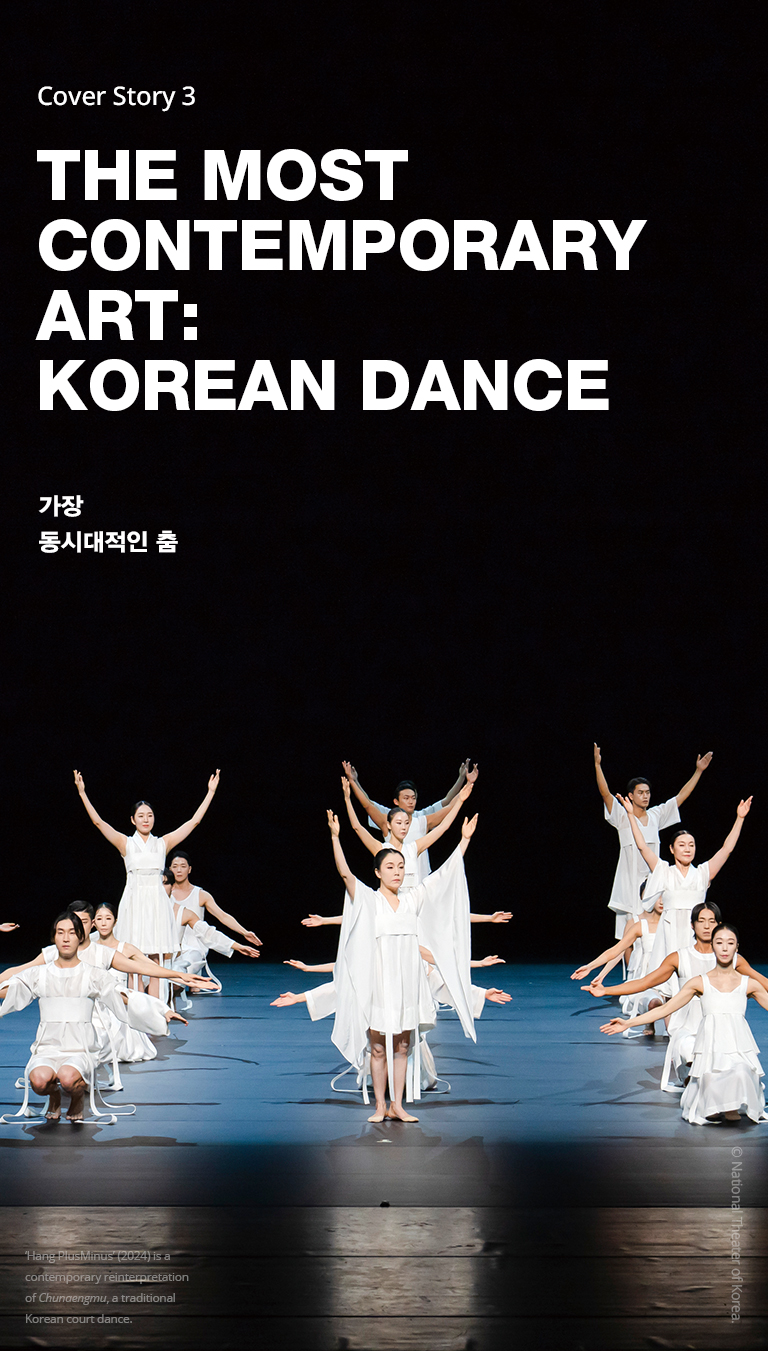
Korean dance refers to traditional dances rooted in Korea’s heritage. Among its various genres, Korean creative dance is currently receiving the most attention. By examining examples of Korean creative dance, we can explore the unique traditional characteristics of Korean dance and how it is evolving toward the future.
최근 신선한 충격을 던지고 있는 한국무용 신에서 가장 주목받는 것이 바로 한국창작무용이다. 한국창작무용의 사례를 통해, 한국무용만의 전통적 특징이 무엇인지, 그리고 한국무용이 어떻게 미래로 발전하고 있는지 살펴본다.
Writer. Yang Eunhye
Korean dance can be likened to poetry. Just as poetry uses language to convey rhythm and meaning, Korean dance expresses emotions and stories through movement, breath and rhythm. Each gesture connects like a word, building narratives that reflect the emotions, history and cultural identity of the Korean people. Like poetry, Korean dance creates a deep connection with the audience, allowing them to experience the unique cultural roots and landscapes of Korea.
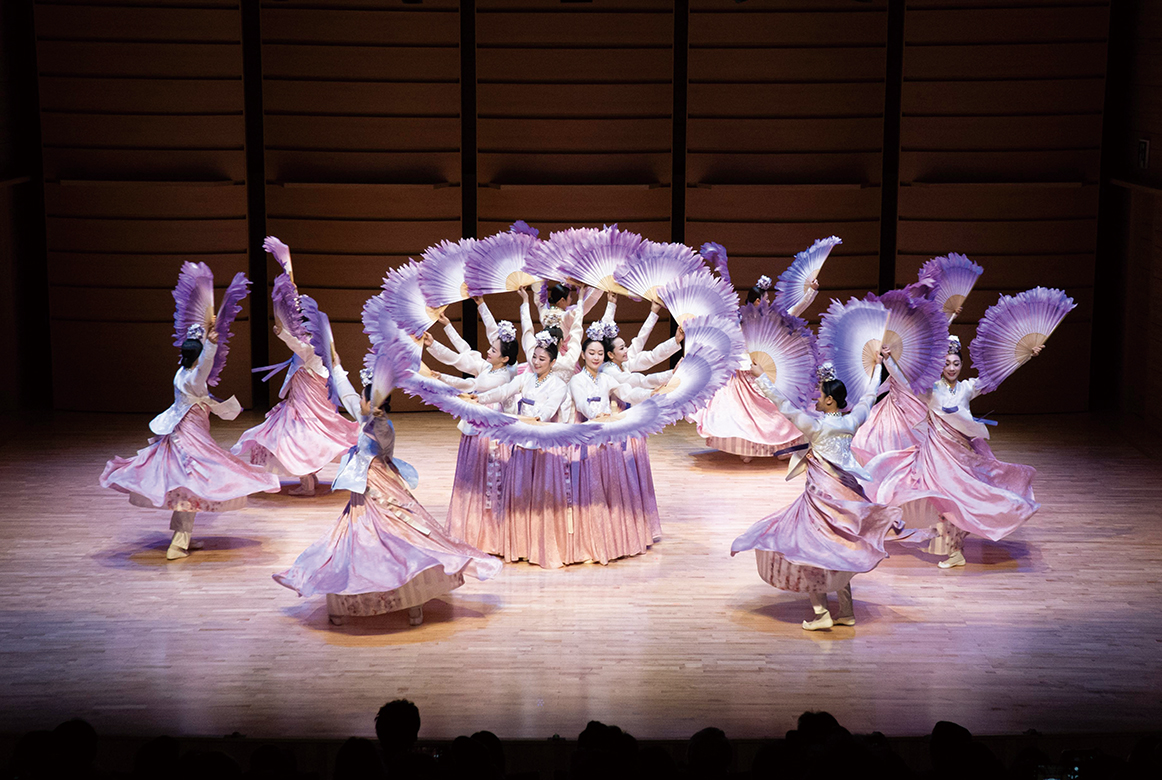 Buchaechum is a traditional Korean fan dance known for its mesmerizing group choreography and colorful fans.
Buchaechum is a traditional Korean fan dance known for its mesmerizing group choreography and colorful fans.
© National Gugak Center.
Korean dance includes various forms: court dances that honored royal dignity, folk dances performed by commoners, mask dances, ritual dances for state ceremonies or agricultural rites—and, encompassing all of these, creative dance. Today, Korean creative dance is one of the most beloved genres of Korean dance both at home and abroad. By examining it, we can understand not only what makes Korean dance unique but also how it is expanding and evolving.
Korean creative dance does not replicate traditional forms exactly. While themes are flexible, they often reinterpret traditional dances inspired by nature or religious rituals, maintaining a connection to the past. Structurally, they retain core elements of traditional dance such as symbolic breathwork and movement aesthetics derived from court, folk, mask and ritual dances. The Korean emphasis on curves and cycles manifests in motions like meokgi (gathering energy), pureonaegi (releasing), jwigi (concentrating force) and pulgi (complete relaxation), flowing through the choreography as a whole. Breath is deeply linked to the dancer’s emotions, with all movements grounded in breath, distinguishing it from other forms of dance that prioritize linear limb movements.
Moreover, Korean creative dance actively incorporates modern elements. Movements may be twisted or linear, and electronic music or other contemporary aspects are often introduced. Choreography is frequently developed in collaboration with choreographers from other genres, such as contemporary dance. Western influences are also seen in stage direction and costume design.
Through these performances, audiences experience a blend of tradition and modernity, discovering a uniquely Korean identity and beauty. In this way, Korean creative dance transcends mere physical movement and becomes poetic— expressing the Korean spirit and way of life.
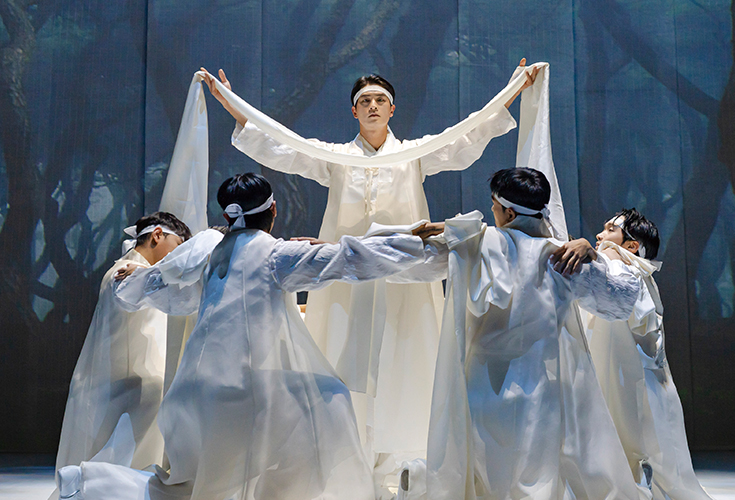 ‘Festival’ (2025) is a work that presents dances performed at feasts and
‘Festival’ (2025) is a work that presents dances performed at feasts and 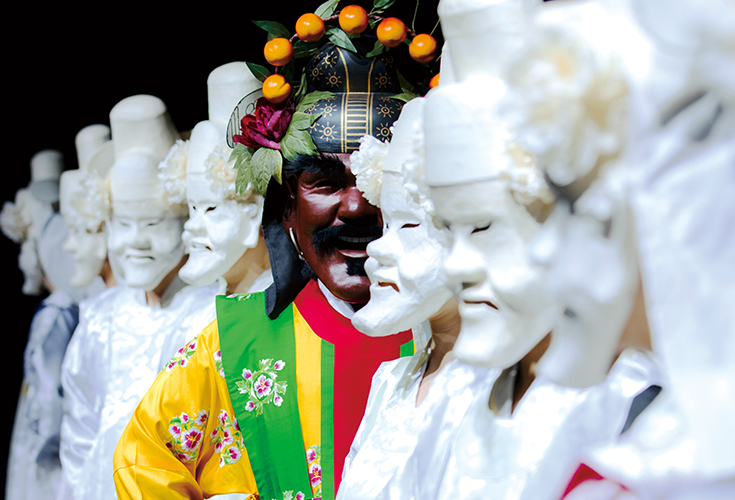 Cheoyongmu is recognized by UNESCO as an Intangible Cultural Heritage.
Cheoyongmu is recognized by UNESCO as an Intangible Cultural Heritage. What are some current examples of Korean creative dance? Notably, the National Dance Company of Korea has presented works such as “The Scent of Ink” (2013) and “The Banquet” (2015). These productions retain traditional elements in dance, costume and music, while incorporating modern stage aesthetics. Since their debut, they have received acclaim across Asia, Europe and North America.
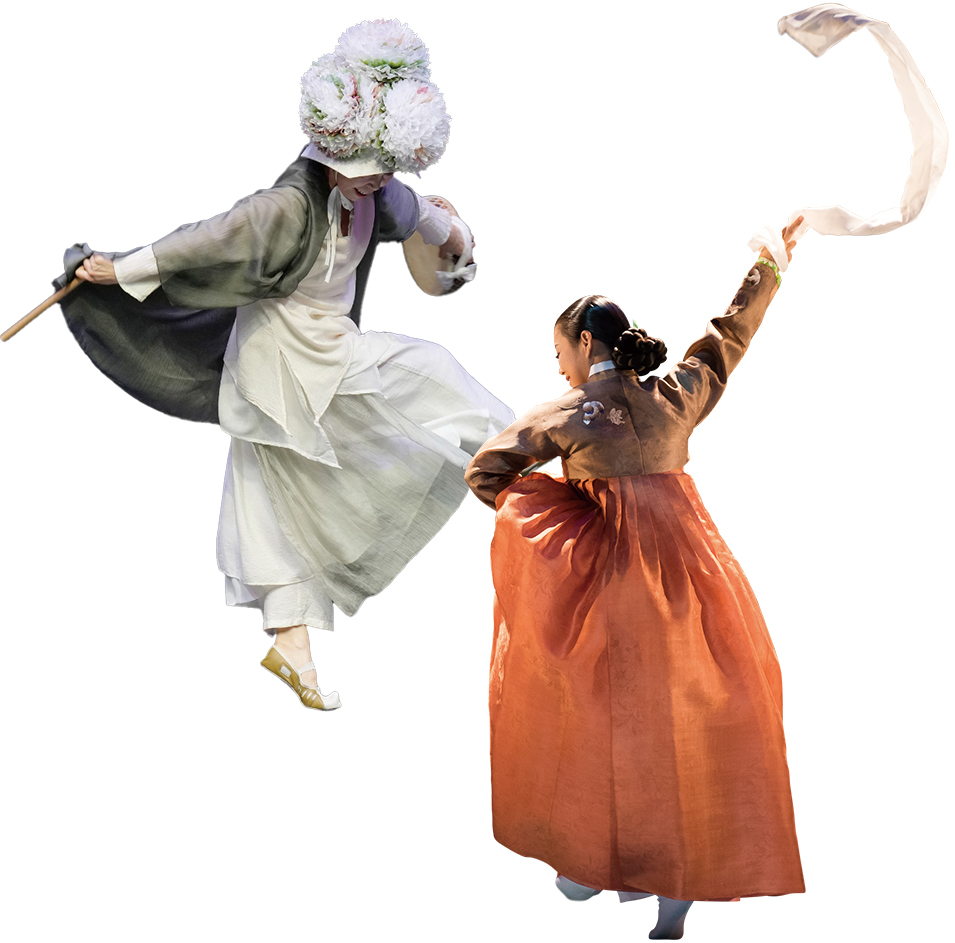 (Left) Sogochum (small drum dance), performed at 'Cecil Pungnyu' (2025)
(Left) Sogochum (small drum dance), performed at 'Cecil Pungnyu' (2025)
ⓒ Ok Sang-hun / National Jeongdong Theater.
(RIght) Gyobangchum (Korean courtesan dance), performed with bare hands and fabric at 'Cecil Pungnyu' (2025)
ⓒ Ok Sang-hun / National Jeongdong Theater.
Another significant piece is “One Dance” (2022) by the Seoul Metropolitan Dance Theatre, a modern reinterpretation of the “Jongmyo Jeryeak”—a ritual court dance and music performed during ancestral rites for Joseon dynasty kings and queens. The piece maintained reverence and formality while boldly reimagining tradition, demonstrating the resilience and adaptability of Korean dance.
More recently, the National Dance Company presented “Beauty” (2025), featuring an all-female cast, and “Five Vibe” (2025), performed entirely by male dancers. “Beauty” blended the visual aesthetics of broadcast and fashion with classical dance and K-pop style. The soundtrack was composed by Jang Young-gyu of the pop band LEENALCHI, adding a layer that appealed to popular taste. “Five Vibe” was choreographed by contemporary dance artist Ye Hyo-seung.
These works all preserved the core of tradition while embracing collaboration and innovation. The dancers’ lines and forms expanded into stage set design, creating a unified visual motif from small props to large-scale sets, all tied together with key colors. As dance and music extended into the spatial design, audiences could experience and connect with tradition in a bold, contemporary way. Through this example, it becomes evident that tradition and modernity coexist and expand together in a spirit of mutual reinforcement in Korean dance.
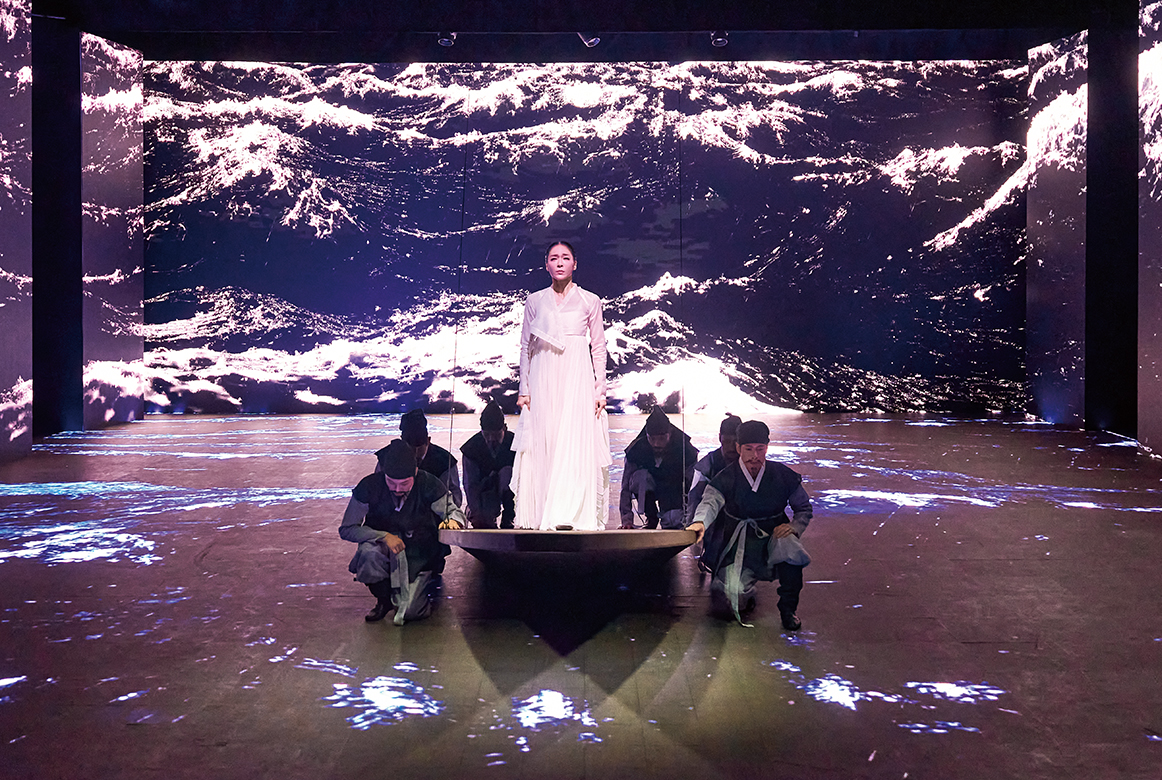 ‘PURE HEART’ (2025), a theatrical piece inspired by the Korean classical folktale Simcheong, which is rooted in the tradition of pansori (traditional lyrical opera).
‘PURE HEART’ (2025), a theatrical piece inspired by the Korean classical folktale Simcheong, which is rooted in the tradition of pansori (traditional lyrical opera).
ⓒ National Jeongdong Theater.
As the examples illustrate, Korean creative dance is a fusion genre combining traditional and modern elements from both East and West. It is a distinct evolution of Korean dance, separate from contemporary dance. Yet, questions remain as to where Korean creative dance draws the line between traditional and modern—and many still struggle to differentiate it from contemporary dance.
To understand this, we can recall Choi Seunghee, a dancer who pioneered creative Korean dance in the 1930s. She introduced ballet techniques into traditional Korean dance and called this sin muyong (new dance). Her work dealt with folktales, legends and traditional customs, marking the start of Korea’s creative dance era through stylistic transformation.
Since the 1970s, Korean creative dance has modernized rapidly. Global cultural exposure through events like the 1986 Asian Games and 1988 Olympics brought Western artistic techniques to Korea. The opening of venues such as Sejong Center (1970s) and the National Theater of Korea (1990s) helped shift Korean dance into Western theatrical formats. As a result, the short solo dances of 3–5 minutes performed outside of theaters evolved into 20–40minute group or solo performances suited for modern stages, and themes became more diverse.
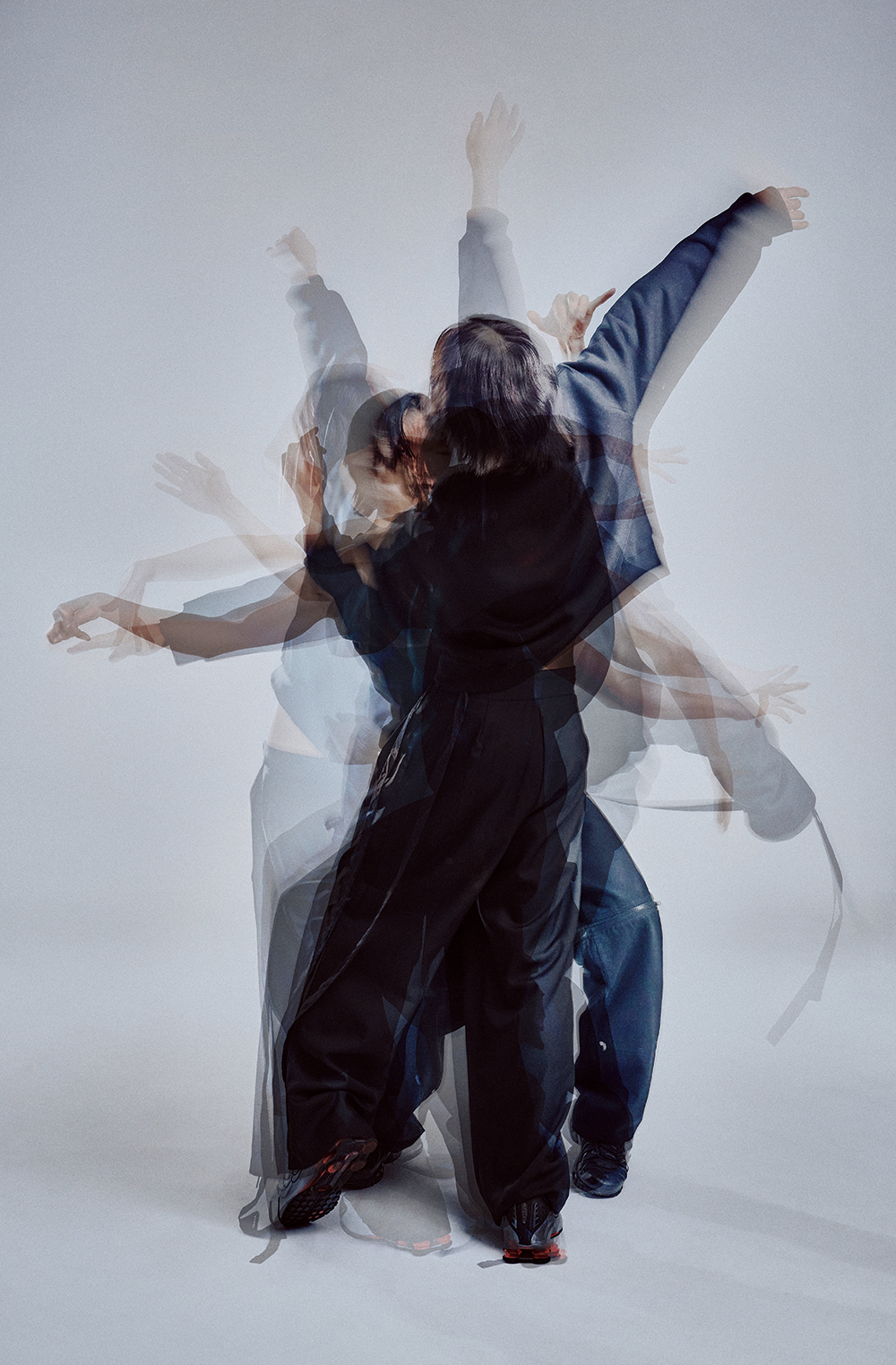 ‘Five Vibe’ (2025), a Korean creative dance performed exclusively by male dancers
‘Five Vibe’ (2025), a Korean creative dance performed exclusively by male dancers
© National Theater of Korea.
This sparked a broad philosophy: “If it’s performed by Koreans and rooted in Korean sentiment and culture, isn’t it Korean dance?” With this inclusive approach, Korean dance today explores new choreographic possibilities while blending with popular and contemporary culture. Recent work even incorporates innovative technology like artificial intelligence and robotics.
Korean dance, enriched by diverse cultural exchanges and creative experimentation, is now entering a period of unprecedented growth. Rooted in its traditional vocabulary of movement, it will continue composing beautiful poetry through the body.
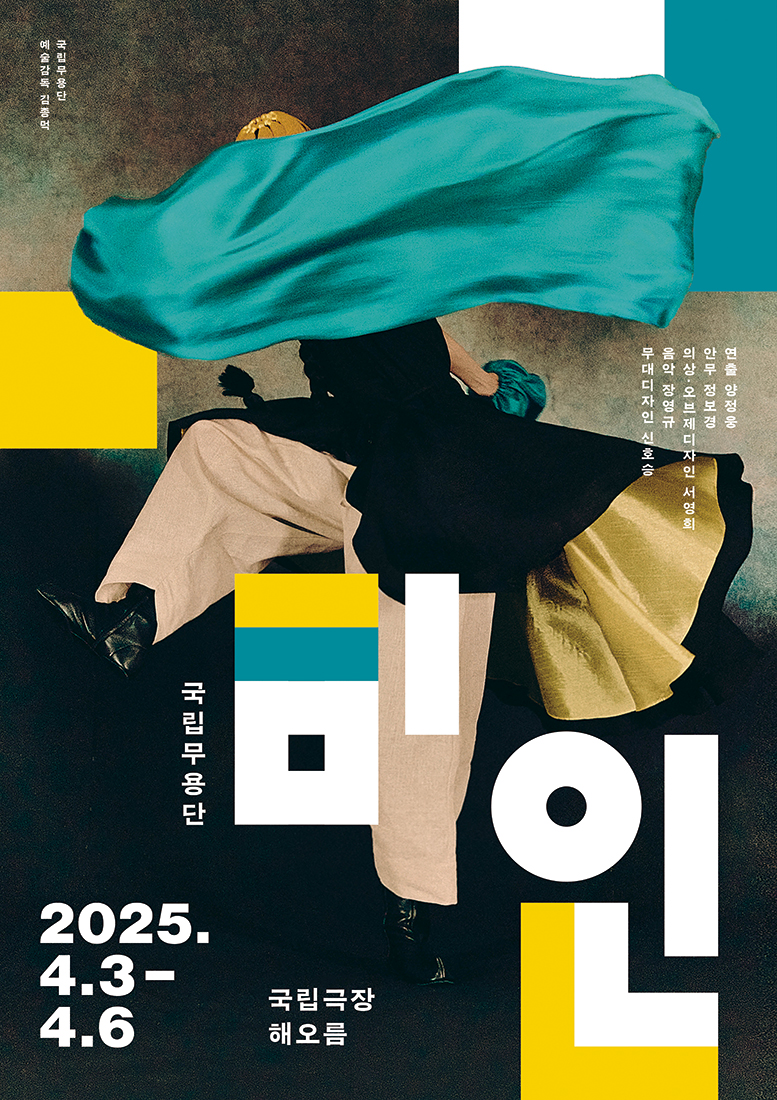 ‘Beauty’ (2025), a Korean creative dance performed exclusively by female dancers
‘Beauty’ (2025), a Korean creative dance performed exclusively by female dancers
© National Theater of Korea.
Writer. Yang Eunhye
A cultural planner, columnist and dance audio describer, Yang Eunhye is the Strategic Planning Director at the Itami Jun Architecture & Culture Foundation. She has previously served as editor-in-chief of the Seoul Foundation for Arts and Culture’s webzine “CHOOM:IN” and as a reporter for the dance magazine “Dance and People.”